Key Highlights
- Iron is a crucial mineral for your child’s growth, supporting everything from brain development to energy levels.
- Ensuring adequate iron intake helps produce healthy red blood cells, which carry oxygen throughout the body.
- A lack of iron can lead to iron deficiency anaemia, a condition that may cause fatigue and delayed development.
- The recommended amount of iron varies by age, with infants and toddlers needing significant amounts for their rapid growth.
- You can boost your child’s iron levels with both animal-based (heme) and plant-based (non-heme) foods.
- Pairing iron-rich foods with vitamin C sources like citrus fruits can significantly improve iron absorption.
Is your child getting enough iron? This essential mineral is a powerhouse for growing bodies, playing a vital role in their energy, immunity, and overall development.
Iron is necessary for producing haemoglobin, the protein that helps create healthy red blood cells to transport oxygen everywhere. During periods of rapid growth, a child’s iron needs are especially high.
By including a variety of delicious and accessible iron-rich foods in their diet, you can support their health and set them up for a vibrant, active childhood. Read this blog to understand all about your child’s iron needs.
How Much Iron Do Kids Need?
Getting the right amount of iron for your little one doesn’t have to be complicated. Infants aged 7-12 months need 11 mg daily, toddlers 1-3 years need 7 mg, and kids 4-8 years need 10 mg. Knowing these targets helps you plan meals that support healthy development.
When looking at iron foods for kids, you’ll discover two types: heme and nonheme iron.
Heme iron. This type of iron comes from animal sources like meat, poultry, and fish. It’s absorbed more easily by the body, making it an efficient way to boost iron levels.
Non-heme iron. This type is found in plant-based foods such as beans, lentils, spinach, and other leafy greens. While absorption is lower compared to heme iron, pairing these foods with vitamin C-rich options like oranges, strawberries, or bell peppers helps the body take in more of the iron.
How Do Iron Needs Change by Age?
A child’s iron needs are not static; they evolve as they grow. The recommended dietary allowance for iron is highest during periods of rapid growth, particularly in the first few years of life.
Here is a simple guide to the recommended dietary allowance (RDA) for iron at different stages:
| Age Group | Recommended Daily Iron (mg) |
| 7 to 12 months of age | 11 mg |
| 1 to 3 years of age | 7 mg |
| 4 to 8 years of age | 10 mg |
| 9 to 13 years of age | 8 mg |
What Are the Symptoms of Iron Deficiency in Children?
Iron deficiency is surprisingly common in children. Watch for these signs:
- Pale skin, lips, or nail beds
- Unusual tiredness or weakness
- Irritability or frequent fussiness
- Poor appetite (which creates a difficult cycle)
- Slowed growth or development
- Unusual cravings for non-food items
Prevention through diet: The best approach is consistent prevention through varied, iron-rich meals. Include different types of iron foods for kids daily, maximise absorption with vitamin C pairings, and maintain balanced nutrition rather than waiting for problems to develop. Also, use iron utensils to cook, as they will increase the iron content of food.
Check out these Summer Food For Kids That You Need To Try if your kid is a fussy eater.
What Are The 18 Best Sources Of Iron For Kids?
Creating an iron-rich diet for kids doesn’t mean boring meals! Here’s a list of iron-rich foods for kids that are both nutritious and delicious:
1. Spinach
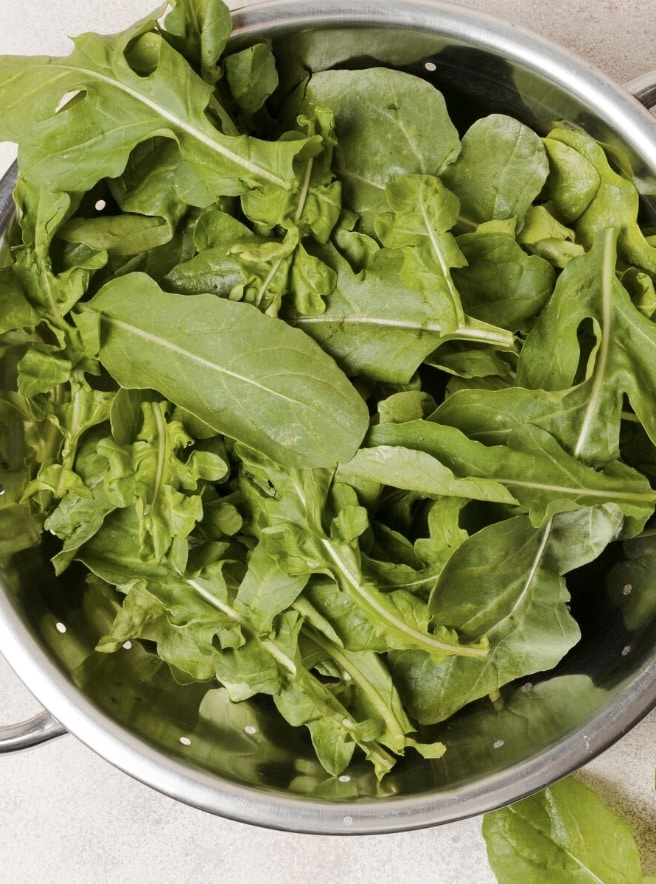
spinach is an iron rich food option for option for kids
This leafy green powerhouse packs around 3 mg of iron per half-cup when boiled and is one of the easiest ways to sneak nutrition into your child’s meals. Beyond iron, spinach also provides calcium, fibre, and folate, which are all essential for growth.
Blend it into fruit smoothies (the sweetness hides the flavour), stir it into dals, or finely chop it for scrambled eggs and parathas. Kids won’t even notice they’re eating greens!
2. Finger Millet (Ragi)
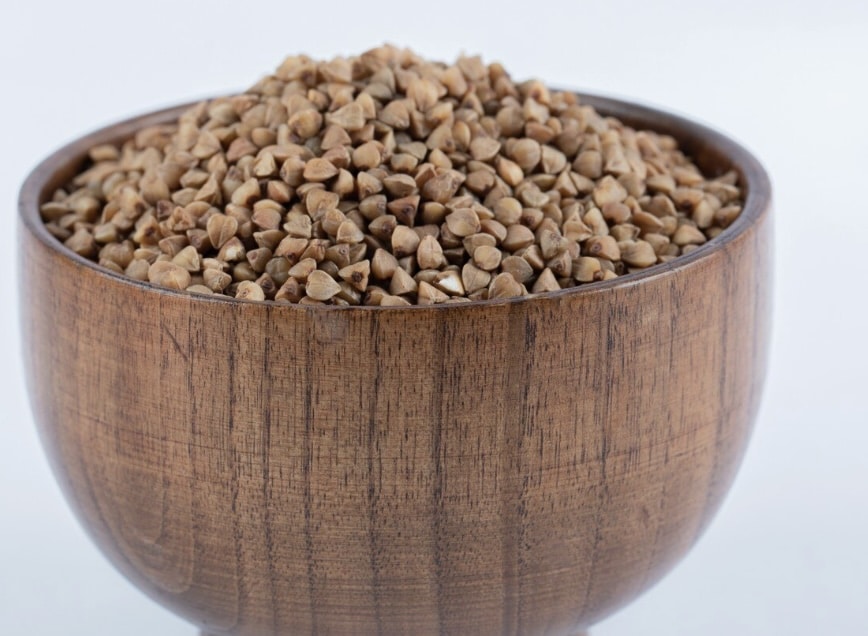
ragi is rich in iron.
A true Indian superfood, ragi (nachni) is not only rich in iron but also a great source of calcium, fibre, and amino acids. It’s perfect for growing bones and improving digestion. Try a comforting ragi porridge with milk and jaggery for breakfast, or make ragi dosa or cookies for a wholesome snack. Its mild, nutty flavour makes it easy for kids to enjoy.
3. Rajma (Kidney Beans)
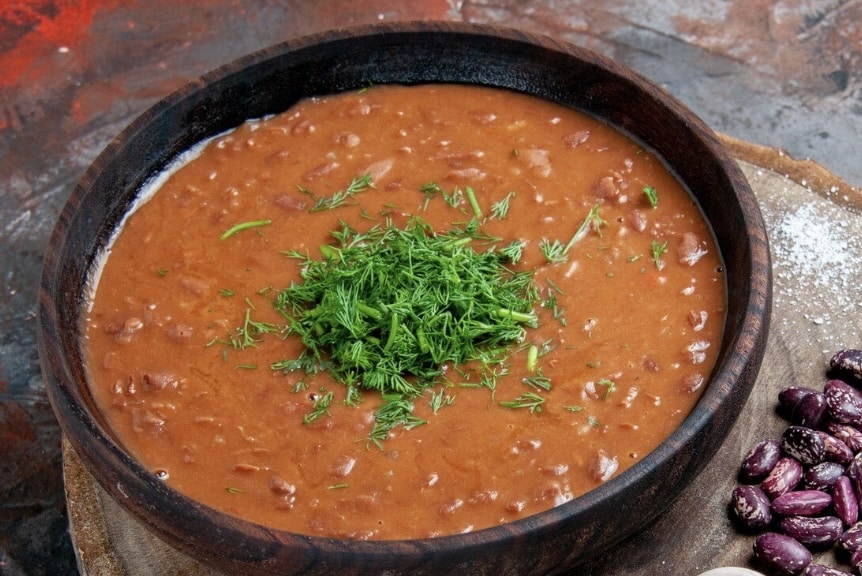
rajma or kidney beans is a good source of iron.
Half a cup of rajma provides about 2 mg of iron and plenty of protein. When combined with rice, it forms a complete meal, making it ideal for vegetarian families. Serve it as a soft curry, mash it into dips, or roll it into stuffed parathas for picky eaters.
4. Eggs
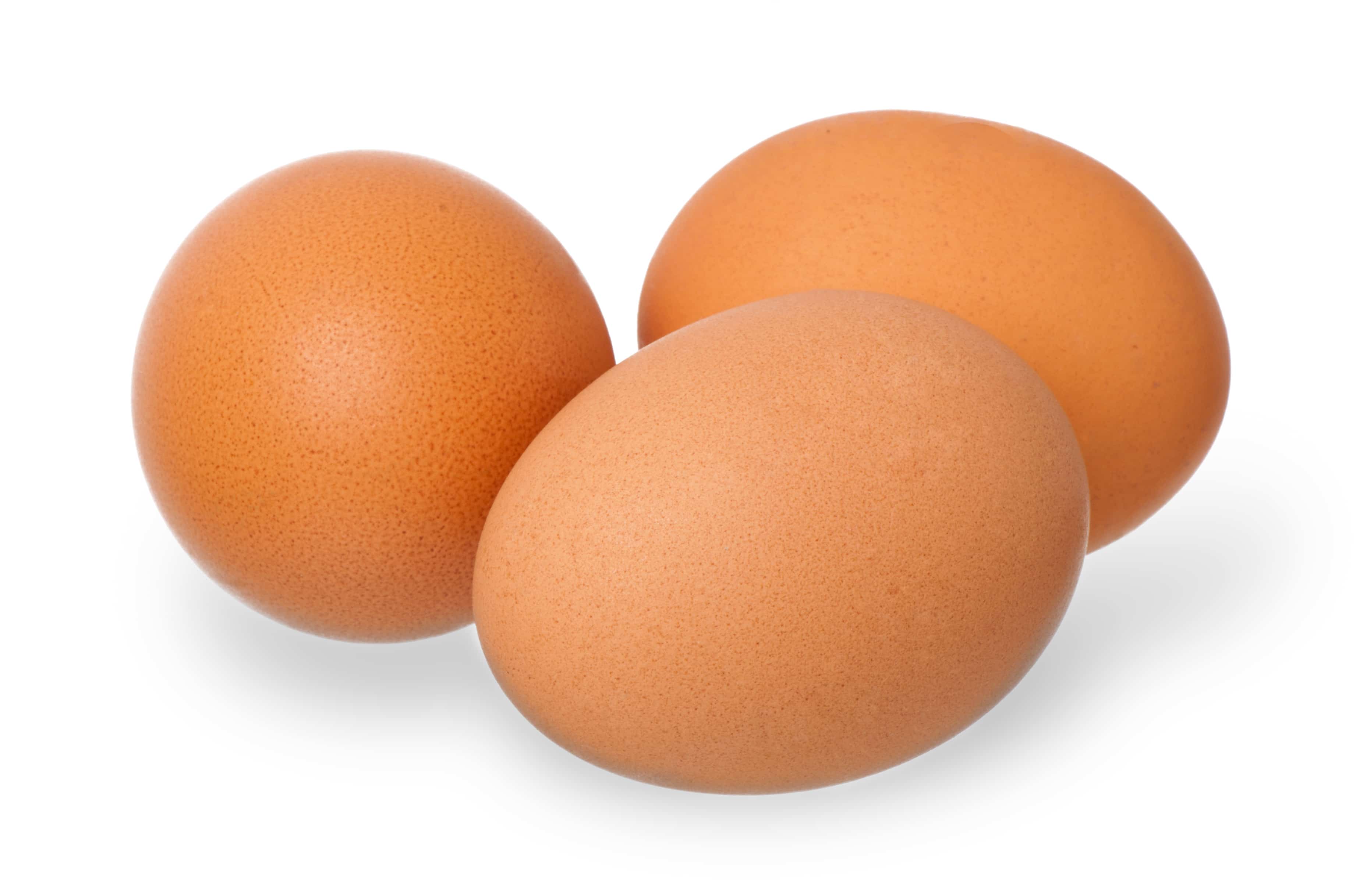
Brown egg on white background
Each hard-boiled egg contains about 1 mg of easily absorbed heme iron, mainly in the yolk. Eggs are also rich in vitamin D and protein, supporting overall growth. For toddlers, mash yolks with avocado or banana; for older kids, make cheesy scrambled eggs or boiled-egg sandwiches.
5. Fortified Breakfast Cereals
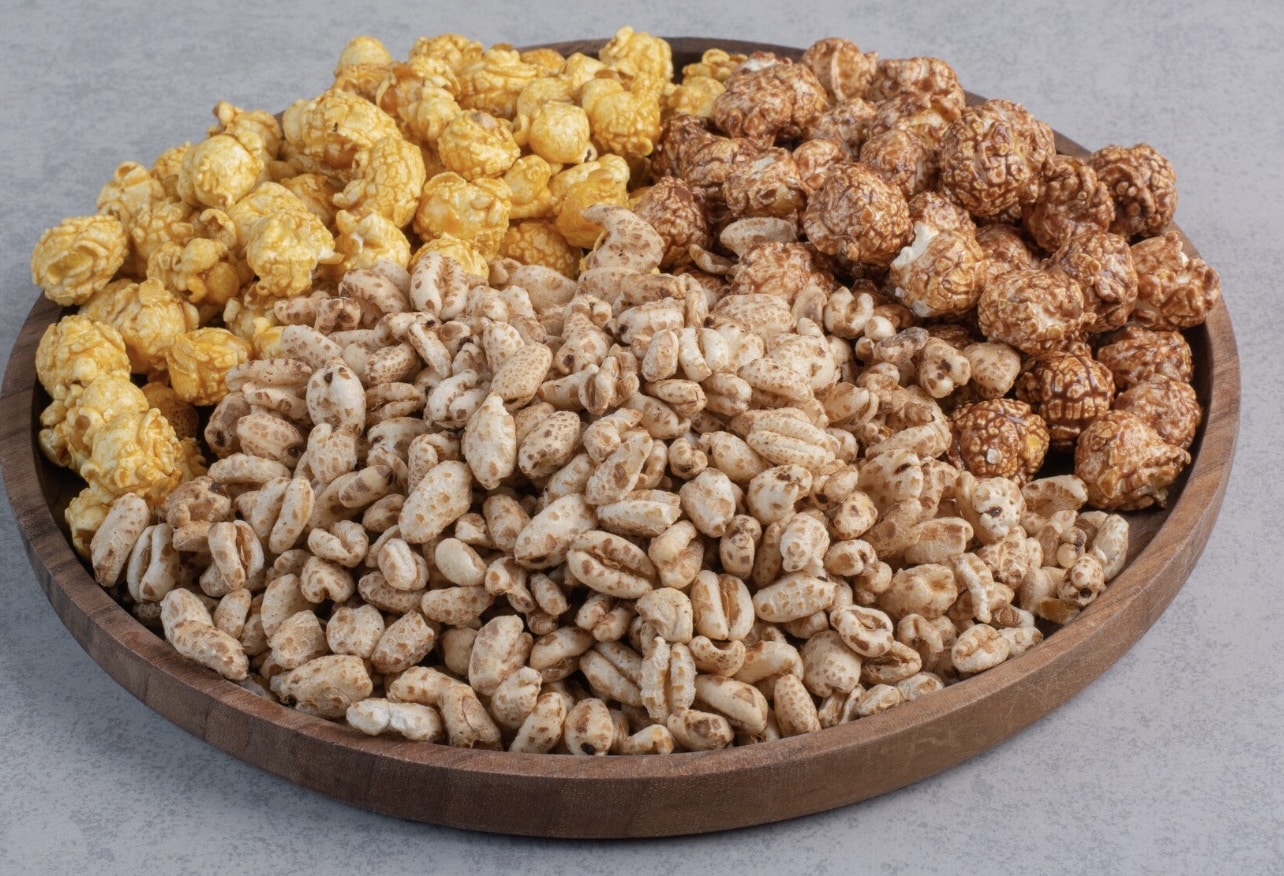
fortified cereals are a rich source of iron
Many fortified cereals contain up to 100% of daily iron needs per serving. Always check labels and choose low-sugar, whole-grain varieties. Pair with vitamin C-rich fruits like strawberries or oranges to help the body absorb iron more effectively. Perfect for busy school mornings!
6. Tofu
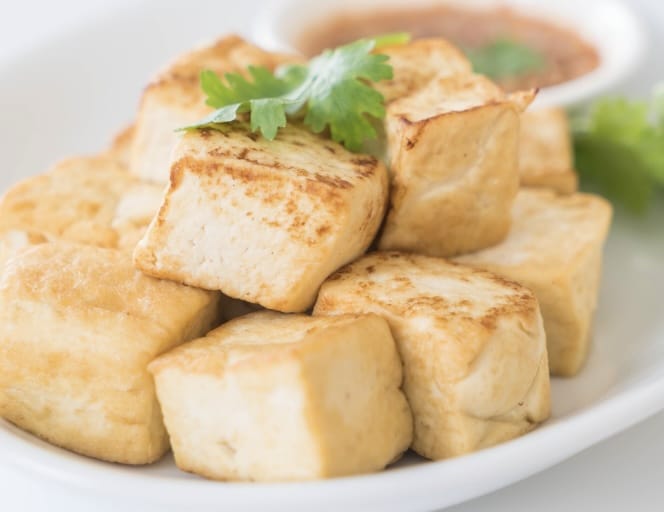
tofu is an excellent source of iron.
A plant-based protein packed with 3 mg of iron per half-cup, tofu also provides calcium and magnesium. It’s mild, soft, and soaks up flavour easily. Dice it into stir-fries, bake it into crispy nuggets, or blend silken tofu into fruit smoothies for a quick and easy protein boost.
7. Chicken
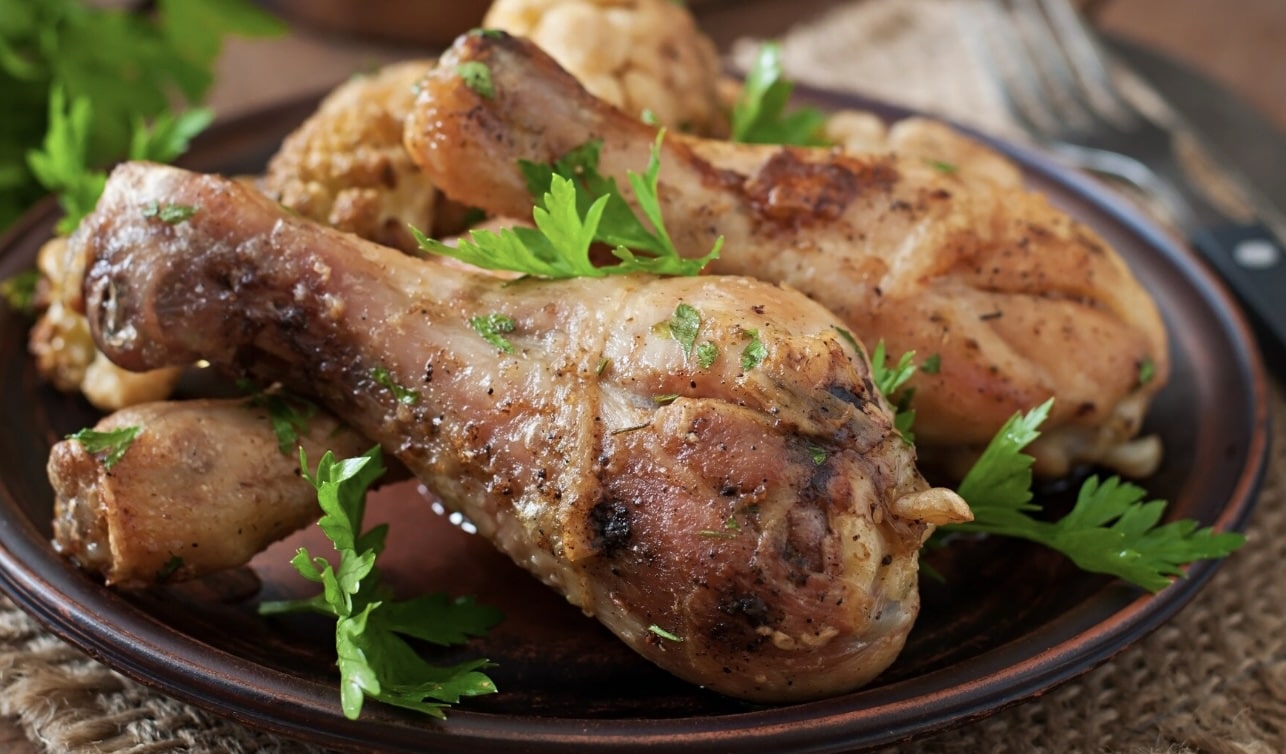
chicken is a good source of iron and protein.
Chicken is a natural source of heme iron, which the body absorbs easily. You can shred tender chicken into soups or mix it into soft pulao for kids. Homemade chicken meatballs or cutlets are also a great option for older children learning to eat independently.
8. Pumpkin Seeds
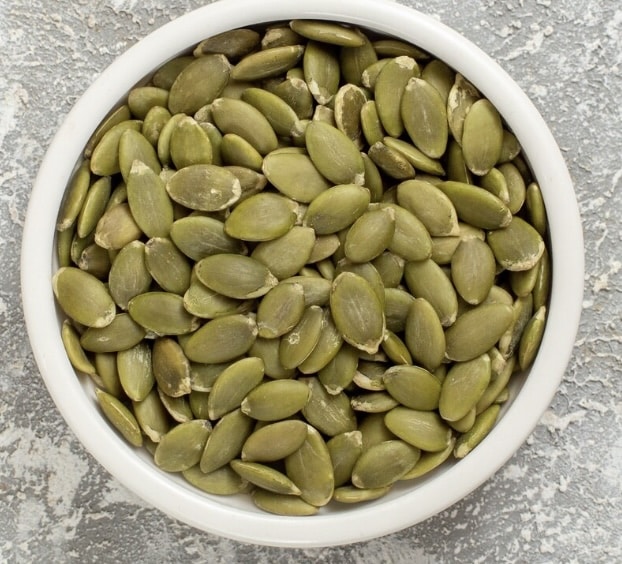
pumpkin seeds provide good amounts of iron to kids
Just a quarter cup offers 2.5 mg of iron, plus zinc and magnesium for immunity and brain health. Roast lightly with a sprinkle of salt for a crunchy snack, or grind them into powder to mix into smoothies, rotis, or porridge for younger kids.
9. Palak Paneer
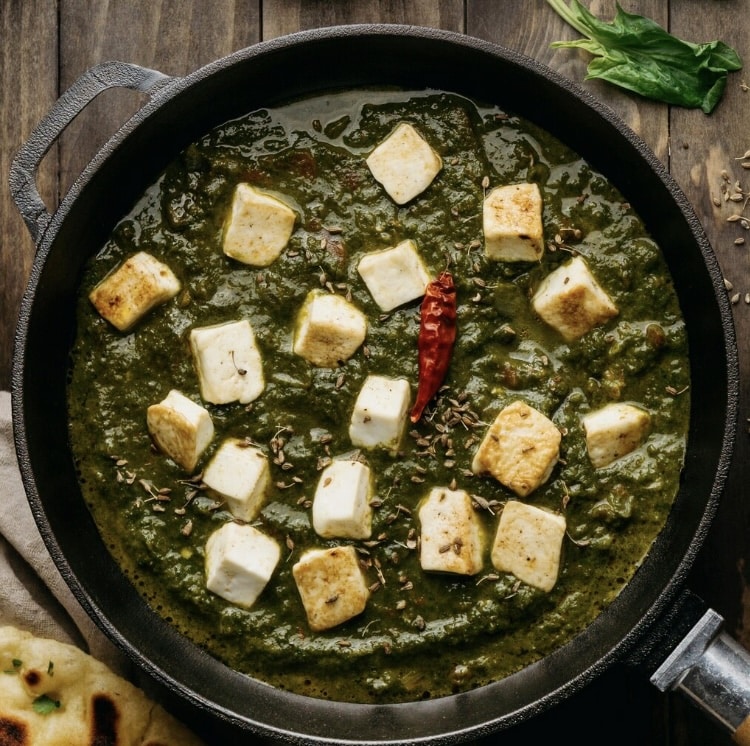
palak paneer is a very good source of iron for kids.
This Indian classic combines iron-rich spinach with protein-packed paneer in a creamy, kid-approved curry. The trick? Add a few drops of lemon juice; its vitamin C content boosts iron absorption, making it super easy to achieve daily iron doses. Serve it with soft rotis, jeera rice, or even mix it into parathas for toddlers.
10. Green Peas
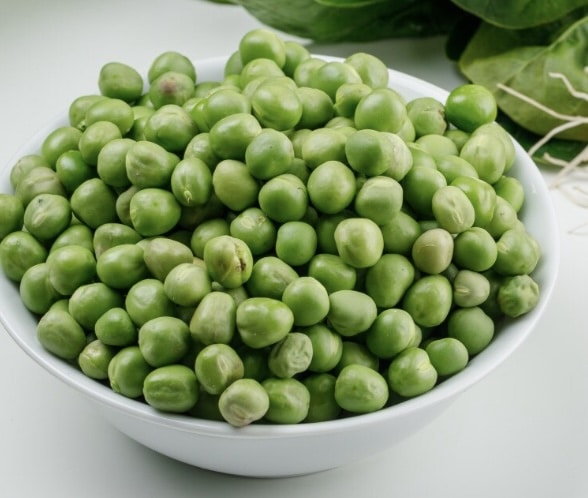
peas are a good source of iron
Half a cup of green peas provides about 1 mg of iron and a good dose of vitamin C and fibre. Kids love their sweet flavour and bright colour. Add them to pasta, fried rice, soups, or just toss with butter and mild seasoning for a simple side.
11. Jaggery
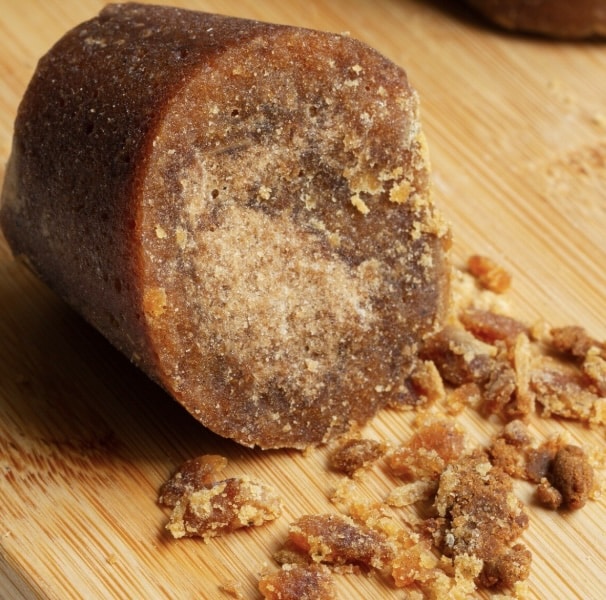
jaggery is one of the rich sources of iron
Unlike refined sugar, jaggery retains valuable minerals like iron, magnesium, and potassium. Use it as a natural sweetener in porridges, kheer, or ladoos. Combine with roasted chana or nuts for an easy homemade energy snack that boosts both energy and iron levels.
12. Dates
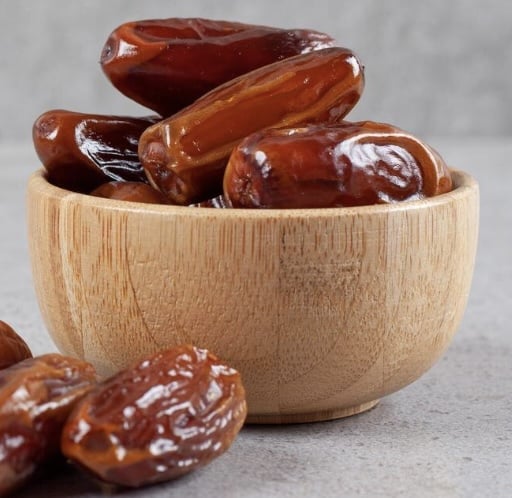
dates are an amazing source of iron
Naturally sweet and rich in iron, fibre, and antioxidants, dates are perfect for growing kids. Blend them into milkshakes, stuff with almonds for older kids, or chop into yoghurt or oatmeal. They’re a great substitute for refined sugar in desserts and snacks.
13. Lentils (Dal)
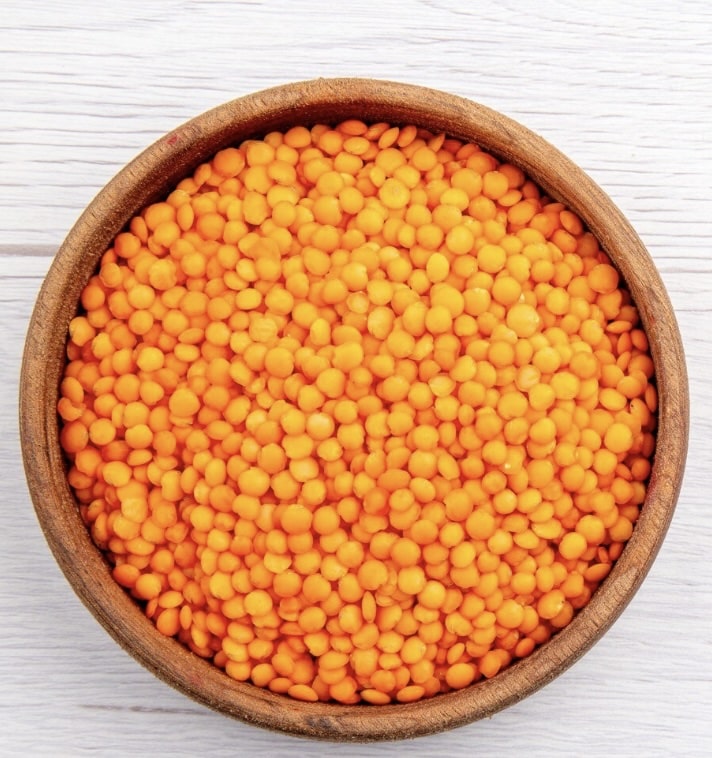
lentils or dal is a good source of iron for kids
Half a cup of cooked dal contains roughly 3 mg of iron, along with protein and fibre. Red lentils (masoor dal) cook quickly into a smooth puree, while green or brown lentils hold their shape, making them perfect for hearty dals or khichdi. A daily bowl helps prevent iron deficiency naturally.
14. Amla (Indian Gooseberry)
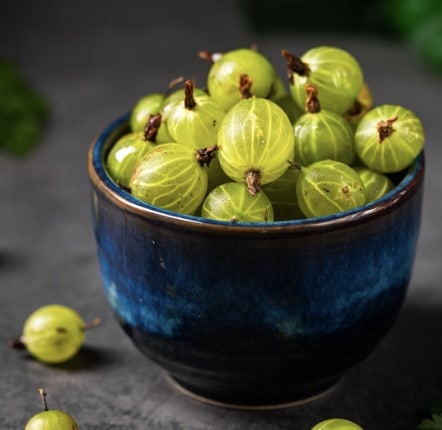
amla or gooseberry provides immense iron to kids
Amla isn’t iron-rich itself, but it’s a vitamin C powerhouse that boosts iron absorption from other foods. Include small servings of fresh amla juice, chutney, or murabba in your child’s diet. It is known to strengthen immunity and help you digest your food as well.
15. Fish (Tuna or Salmon)
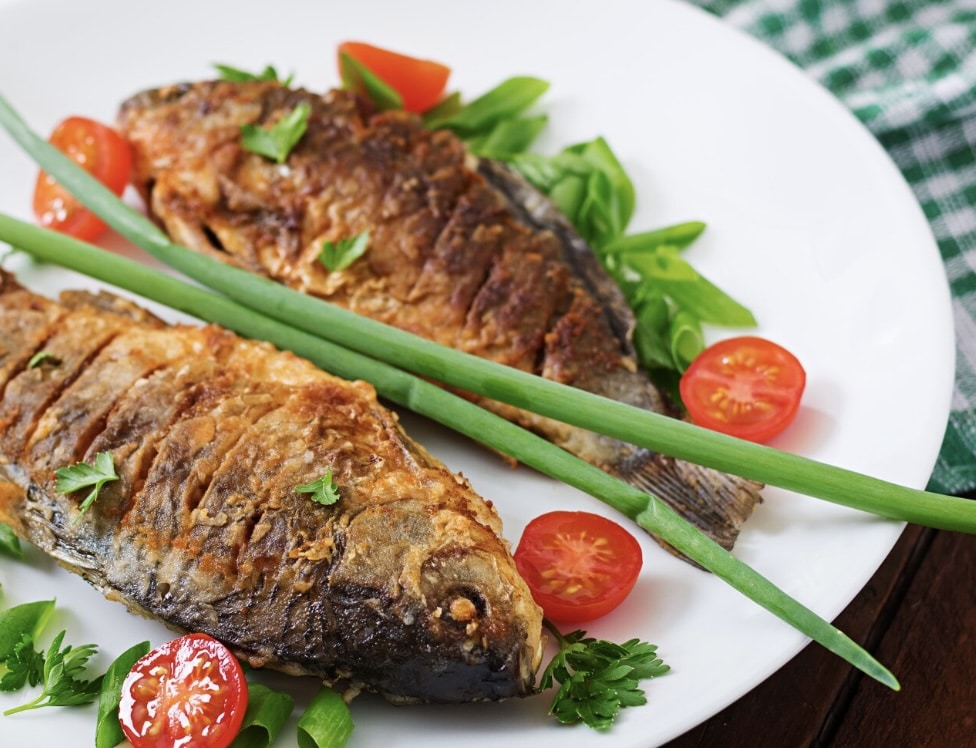
fish is a really good source of iron.
Three ounces of light tuna or salmon provides about 1 mg of iron, along with omega-3 fatty acids required for brain development. You can flake soft, boneless fish into pasta, mix with mashed potatoes, or blend with yoghurt for toddlers learning to chew.
16. Beans and Chickpeas
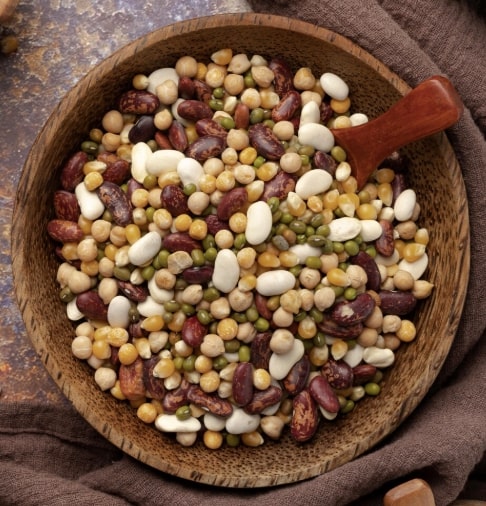
beans and chickpea in a bowl
Beans and chickpeas are packed with iron, protein, and fibre, a perfect vegetarian combo for strength and growth. Serve as chana chaat, hummus, or rajma curry with rice. For babies, mash boiled chickpeas with a bit of olive oil or curd for a soft meal.
17. Jaggery + Sesame Laddoos

jaggery and sesame laddus in a bowl
These homemade gur til laddoos combine iron from jaggery and calcium from sesame seeds, creating an energy-rich, nutrient-dense snack. They’re perfect for tiffin boxes or after-school treats and help maintain haemoglobin levels naturally, and the best part is that they taste amazing even without refined sugar.
18. Liver (Chicken or Mutton)

mutton liver in a bowl
One of the richest sources of heme iron, liver also offers vitamin A, B12, and folate, which are all key nutrients needed for providing energy and blood production. Serve in small portions as a mild curry, stir-fry, or blended into soups. It’s best to give only occasionally due to its high vitamin A content.
Here are a few Healthy Indian Lunch Box Ideas for School to help you incorporate iron into your kids’ diet without any stress.
What Are Some Iron-Rich Meals And Snacks I Can Offer My Child?
Creative presentation makes all the difference! Here are some creative cooking recipes for kids that actually work:
Creative Iron Rich Recipes for Kids
These are some recipes you can try for your kids;
- “Ants on a Log” – Spread creamy peanut or almond butter inside celery sticks and top with raisins. It’s crunchy, sweet, and full of protein, fibre, and healthy fats.
- Spinach and Fruit Smoothies – Blend spinach with bananas, apples, or berries. The fruit masks the taste of greens, giving kids a nutrient-packed drink rich in iron and vitamins.
- DIY Mini Pizzas – Use whole-wheat pita or small flatbreads as the base. Top with tomato sauce, spinach, and lean meat like chicken or turkey, then bake until bubbly.
- Meatball “Lollipops” – Make small chicken or lamb meatballs, stick them on skewers, and serve with fun dips like yoghurt sauce or mild tomato chutney for extra appeal.
Vegetarian Iron Rich Diet For Kids: For families following plant-based diets, focus on dal varieties, leafy greens in parathas, and ground pumpkin seeds in cereal. Always pair with vitamin C sources for maximum absorption.
Non-vegetarian Best Source Of Iron For Kids: Dark chicken meat, egg yolks, and flaked fish are among the best sources of iron for kids since they’re easily absorbed and kid-friendly.
Learn these Tasty Dinner Recipes for Kids to help your kids’ iron intake for proper growth and nutrition.
Conclusion
Ensuring that your child receives enough iron is crucial for their growth and development. The range of iron-rich foods we’ve explored not only provides essential nutrients but can also be made appealing to even the pickiest eaters.
By incorporating these foods into their diet and being mindful of the different iron needs as they grow, you can help prevent deficiency while promoting healthy eating habits.
Frequently Asked Questions
Does vitamin C help kids absorb iron from meals?
Vitamin C significantly improves iron absorption, especially the non-heme form of iron found in plant-based foods. Serving citrus fruits, strawberries, or bell peppers alongside iron-rich meals is a simple and effective way to boost your child’s overall iron intake and get the most out of their food.
What can parents do if their child is a picky eater and not getting enough iron?
For picky eaters, try “hiding” iron-rich foods in their favourite meals, like blending lentils into pasta sauce or adding spinach to smoothies. Offer fun dips with iron-rich finger foods. These expert tips can help boost their iron intake and support a balanced diet while they learn to accept new foods.
How much iron do children need at different ages?
Iron needs vary by age. The recommended dietary allowance is 11 mg of iron for infants 7-12 months, 7 mg for toddlers 1-3 years of age, and 10 mg for children 4-8 years. Meeting these targets is crucial for healthy growth and development at each stage.
How much do you incorporate iron rich foods for daily meals?
Include at least one iron-rich food in two to three meals daily. Balance with fruits and vegetables rich in vitamin C to improve absorption, ensuring kids get steady nutrients for growth and energy.
What foods are high in iron for young children?
Great options include red meat, chicken, eggs, beans, lentils, spinach, pumpkin seeds, fortified cereals, and tofu. These provide a mix of heme and non-heme iron, supporting your child’s healthy development and energy levels.
What are 10 healthy foods that are high in iron?
Top picks include red meat, chicken liver, eggs, beans, lentils, spinach, kale, tofu, pumpkin seeds, fortified cereals, and quinoa. Together, these foods offer a balance of heme and non-heme iron.
What are your go-to high iron meals for your babies?
Mashed lentils with carrots, iron-fortified cereals, pureed chicken with peas, scrambled egg yolks, and spinach puree are my go-to meals. Each combines gentle textures with essential iron for healthy baby growth and development.
How can vitamin C enhance iron absorption in a child’s diet?
Vitamin C helps the body absorb non-heme iron from plant foods. Pairing foods like oranges, strawberries, or tomatoes with beans, spinach, or lentils ensures your child’s body makes the most of the iron consumed.
What are iron-rich meals for kids?
Iron-rich meals include lentil soup with spinach, chicken curry with peas, fortified cereals with milk, or scrambled eggs with whole-grain toast. Each balances iron sources with other nutrients kids need for growth and energy.
How can I increase my child’s iron?
You can boost iron by regularly offering red meat, fish, beans, spinach, or fortified cereals. Pairing these with vitamin C foods like oranges or tomatoes helps absorption, making everyday meals more effective.













1 comment
Thanks for sharing this! Many parents struggle to identify iron rich foods for babies, so this guide is truly valuable. Foods like fortified cereals, pureed meats, beans, and leafy greens can help prevent iron deficiency and support overall development. Very informative!